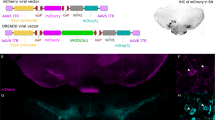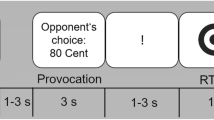Abstract
Catechol-O-methyl transferase (COMT) val108/158met polymorphism impacts on cortical dopamine levels and may influence functional magnetic resonance (fMRI) measures of task-related neuronal activity. Here, we investigate whether COMT genotype influences cortical activations, particularly prefrontal activations, by interrogating its effect across three tasks that have been associated with the dopaminergic system in a large cohort of healthy volunteers. A total of 50 participants (13 met/met, 23 val/met, and 14 val/val) successfully completed N-Back, Go-NoGo, and Tower of London fMRI tasks. Image analysis was performed using statistical parametric mapping. No significant relationships between COMT genotype groups and frontal lobe activations were observed for any contrast of the three tasks studied. However, the val/val group produced significantly greater deactivation of the right posterior cingulate cortex in two tasks: the Go-NoGo (NoGo vs Go deactivation contrast) and N-Back (2-back vs rest deactivation contrast). For the N-Back task, the modulated deactivation cluster was functionally connected to the precuneus, left middle occipital lobe, and cerebellum. These results do not support findings of prefrontal cortical modulation of activity with COMT genotype, but instead suggest that COMT val/val genotype can modulate the activity of the posterior cingulate and may indicate the potential network effects of COMT genotype on the default mode network.
Similar content being viewed by others
Log in or create a free account to read this content
Gain free access to this article, as well as selected content from this journal and more on nature.com
or
References
Bertolino A, Blasi G, Latorre V, Rubino V, Rampino A, Sinibaldi L et al (2006a). Additive effects of genetic variation in dopamine regulating genes on working memory cortical activity in human brain. J Neurosci 26: 3918–3922.
Bertolino A, Rubino V, Sambataro F, Blasi G, Latorre V, Fazio L et al (2006b). Prefrontal-hippocampal coupling during memory processing is modulated by COMT val158met genotype. Biol psychiatry 60: 1250–1258.
Bishop SJ, Fossella J, Croucher CJ, Duncan J (2008). COMT val158met genotype affects recruitment of neural mechanisms supporting fluid intelligence. Cereb Cortex 18: 2132–2140.
Blasi G, Mattay VS, Bertolino A, Elvevag B, Callicott JH, Das S et al (2005). Effect of catechol-O-methyltransferase val158met genotype on attentional control. J Neurosci 25: 5038–5045.
Brett M, Johnsrude IS, Owen AM (2002). The problem of functional localization in the human brain. Nat Rev Neurosci 3: 243–249.
Buckner RL, Andrews-Hanna JR, Schacter DL (2008). The brain's default network: anatomy, function, and relevance to disease. Ann N Y Acad Sci 1124: 1–38.
Caldu X, Vendrell P, Bartres-Faz D, Clemente I, Bargallo N, Jurado MA et al (2007). Impact of the COMT Val108/158 Met and DAT genotypes on prefrontal function in healthy subjects. NeuroImage 37: 1437–1444.
Camara E, Kramer UM, Cunillera T, Marco-Pallares J, Cucurell D, Nager W et al (2010). The effects of COMT (Val108/158Met) and DRD4 (SNP -521) dopamine genotypes on brain activations related to valence and magnitude of rewards. Cereb Cortex 20: 1985–1996.
Cheesman AL, Barker RA, Lewis SJ, Robbins TW, Owen AM, Brooks DJ (2005). Lateralisation of striatal function: evidence from 18F-dopa PET in Parkinson's disease. J Neurol Neurosurg Psychiatr 76: 1204–1210.
Chen J, Lipska BK, Halim N, Ma QD, Matsumoto M, Melhem S et al (2004). Functional analysis of genetic variation in catechol-O-methyltransferase (COMT): effects on mRNA, protein, and enzyme activity in postmortem human brain. Am J Hum Genet 75: 807–821.
Congdon E, Constable RT, Lesch KP, Canli T (2009). Influence of SLC6A3 and COMT variation on neural activation during response inhibition. Biol Psychol 81: 144–152.
de Frias CM, Marklund P, Eriksson E, Larsson A, Oman L, Annerbrink K et al (2010). Influence of COMT gene polymorphism on fMRI-assessed sustained and transient activity during a working memory task. J Cogn Neurosci 22: 1614–1622.
Drabant EM, Hariri AR, Meyer-Lindenberg A, Munoz KE, Mattay VS, Kolachana BS et al (2006). Catechol O-methyltransferase val158met genotype and neural mechanisms related to affective arousal and regulation. Arch Gen Psychiatry 63: 1396–1406.
Egan MF, Goldberg TE, Kolachana BS, Callicott JH, Mazzanti CM, Straub RE et al (2001). Effect of COMT Val108/158 Met genotype on frontal lobe function and risk for schizophrenia. Proc Natl Acad Sci USA 98: 6917–6922.
Egerton A, Mehta MA, Montgomery AJ, Lappin JM, Howes OD, Reeves SJ et al (2009). The dopaminergic basis of human behaviors: a review of molecular imaging studies. Neurosci Biobehav Rev 33: 1109–1132.
Ettinger U, Kumari V, Collier DA, Powell J, Luzi S, Michel TM et al (2008). Catechol-O-Methyltransferase (COMT) Val(158)met genotype is associated with BOLD response as a function of task characteristic. Neuropsychopharmacology 33: 3046–3057.
First MB, Pincus HA (2002). The DSM-IV Text revision: rationale and potential impact on clinical practice. Psychiatr Serv 53: 288–292.
Friston KJ, Buechel C, Fink GR, Morris J, Rolls E, Dolan RJ (1997). Psychophysiological and modulatory interactions in neuroimaging. NeuroImage 6: 218–229.
Gevins A, Cutillo B (1993). Spatiotemporal dynamics of component processes in human working memory. Electroencephalogr Clin Neurophysiol 87: 128–143.
Goldman D, Weinberger DR, Malhotra AK, Goldberg TE (2009). The role of COMT Val158Met in cognition. Biol psychiatry 65: e1–e2; author reply e3-e4.
Hampson M, Driesen NR, Skudlarski P, Gore JC, Constable RT (2006). Brain connectivity related to working memory performance. J Neurosci 26: 13338–13343.
Harrison BJ, Yucel M, Pujol J, Pantelis C (2007). Task-induced deactivation of midline cortical regions in schizophrenia assessed with fMRI. Schizophr Res 91: 82–86.
Hershey T, Black KJ, Hartlein J, Braver TS, Barch DM, Carl JL et al (2004). Dopaminergic modulation of response inhibition: an fMRI study. Brain Res Cogn Brain Res 20: 438–448.
Lappin JM, Reeves SJ, Mehta MA, Egerton A, Coulson M, Grasby PM (2009). Dopamine release in the human striatum: motor and cognitive tasks revisited. J Cereb Blood Flow Metab 29: 554–564.
Lawrence AD, Weeks RA, Brooks DJ, Andrews TC, Watkins LH, Harding AE et al (1998). The relationship between striatal dopamine receptor binding and cognitive performance in Huntington's disease. Brain 121 (Part 7): 1343–1355.
Liu B, Song M, Li J, Liu Y, Li K, Yu C et al (2010). Prefrontal-related functional connectivities within the default network are modulated by COMT val158met in healthy young adults. J Neurosci 30: 64–69.
McKiernan KA, Kaufman JN, Kucera-Thompson J, Binder JR (2003). A parametric manipulation of factors affecting task-induced deactivation in functional neuroimaging. J Cogn Neurosci 15: 394–408.
Mehta MA, Gumaste D, Montgomery AJ, McTavish SF, Grasby PM (2005). The effects of acute tyrosine and phenylalanine depletion on spatial working memory and planning in healthy volunteers are predicted by changes in striatal dopamine levels. Psychopharmacology (Berl) 180: 654–663.
Meyer-Lindenberg A, Nichols T, Callicott JH, Ding J, Kolachana B, Buckholtz J et al (2006). Impact of complex genetic variation in COMT on human brain function. Mol psychiatry 11: 867–877, 797.
Mier D, Kirsch P, Meyer-Lindenberg A (2009). Neural substrates of pleiotropic action of genetic variation in COMT: a meta-analysis. Mol psychiatry 15: 918–927.
Myakishev MV, Khripin Y, Hu S, Hamer DH (2001). High-throughput SNP genotyping by allele-specific PCR with universal energy-transfer-labeled primers. Genome Res 11: 163–169.
Owen AM, Doyon J, Petrides M, Evans AC (1996). Planning and spatial working memory: a positron emission tomography study in humans. Eur J Neurosci 8: 353–364.
Owen AM, James M, Leigh PN, Summers BA, Marsden CD, Quinn NP et al (1992). Fronto-striatal cognitive deficits at different stages of Parkinson′s disease. Brain 115 (Part 6): 1727–1751.
Owen AM, McMillan KM, Laird AR, Bullmore E (2005). N-back working memory paradigm: a meta-analysis of normative functional neuroimaging studies. Hum Brain Mapp 25: 46–59.
Prata DP, Mechelli A, Fu CH, Picchioni M, Kane F, Kalidindi S et al (2008). Opposite effects of catechol-O-methyltransferase Val158Met on cortical function in healthy subjects and patients with schizophrenia. Biol psychiatry 65: 473–480.
Rasch B, Spalek K, Buholzer S, Luechinger R, Boesiger P, de Quervain DJ et al (2010). Aversive stimuli lead to differential amygdala activation and connectivity patterns depending on catechol-O-methyltransferase Val158Met genotype. NeuroImage 52: 1712–1719.
Reeves SJ, Grasby PM, Howard RJ, Bantick RA, Asselin MC, Mehta MA (2005). A positron emission tomography (PET) investigation of the role of striatal dopamine (D2) receptor availability in spatial cognition. NeuroImage 28: 216–226.
Rektorova I, Srovnalova H, Kubikova R, Prasek J (2008). Striatal dopamine transporter imaging correlates with depressive symptoms and tower of London task performance in Parkinson's disease. Mov Disord 23: 1580–1587.
Rubia K, Russell T, Bullmore ET, Soni W, Brammer MJ, Simmons A et al (2001). An fMRI study of reduced left prefrontal activation in schizophrenia during normal inhibitory function. Schizophr Res 52: 47–55.
Sambataro F, Reed JD, Murty VP, Das S, Tan HY, Callicott JH et al (2009). Catechol-O-methyltransferase valine(158)methionine polymorphism modulates brain networks underlying working memory across adulthood. Biol psychiatry 66: 540–548.
Schott BH, Seidenbecher CI, Fenker DB, Lauer CJ, Bunzeck N, Bernstein HG et al (2006). The dopaminergic midbrain participates in human episodic memory formation: evidence from genetic imaging. J Neurosci 26: 1407–1417.
Smolka MN, Schumann G, Wrase J, Grusser SM, Flor H, Mann K et al (2005). Catechol-O-methyltransferase val158met genotype affects processing of emotional stimuli in the amygdala and prefrontal cortex. J Neurosci 25: 836–842.
Tan HY, Callicott JH, Weinberger DR (2009). Prefrontal cognitive systems in schizophrenia: towards human genetic brain mechanisms. Cogn Neuropsychiatry 14: 277–298.
Tan HY, Chen Q, Goldberg TE, Mattay VS, Meyer-Lindenberg A, Weinberger DR et al (2007). Catechol-O-methyltransferase Val158Met modulation of prefrontal-parietal-striatal brain systems during arithmetic and temporal transformations in working memory. J Neurosci 27: 13393–13401.
Tunbridge EM, Bannerman DM, Sharp T, Harrison PJ (2004). Catechol-o-methyltransferase inhibition improves set-shifting performance and elevates stimulated dopamine release in the rat prefrontal cortex. J Neurosci 24: 5331–5335.
Tunbridge EM, Harrison PJ, Weinberger DR (2006). Catechol-o-methyltransferase, cognition, and psychosis: Val158Met and beyond. Biol psychiatry 60: 141–151.
Weissman DH, Roberts KC, Visscher KM, Woldorff MG (2006). The neural bases of momentary lapses in attention. Nat Neurosci 9: 971–978.
Winterer G, Musso F, Vucurevic G, Stoeter P, Konrad A, Seker B et al (2006). COMT genotype predicts BOLD signal and noise characteristics in prefrontal circuits. NeuroImage 32: 1722–1732.
Acknowledgements
We thank Nick Craddock, Detelina Grozeva, and Jennifer Turner for their help and assistance with COMT genotyping. We also thank the radiographers and staff of the Cyclotron and MRI units, Hammersmith Hospital, London. The study was supported by a departmental core-funding grant from the Medical Research Council, UK.
Author information
Authors and Affiliations
Corresponding author
Ethics declarations
Competing interests
Dr Stokes and Dr Rhodes report no conflict of interest. Professor Grasby has served as an occasional consultant to GlaxoSmithKline, Merck, and Pfizer. Dr Mehta reports research grant support from Pfizer, GlaxoSmithKline, and Evotec Neurosciences.
Additional information
Supplementary Information accompanies the paper on the Neuropsychopharmacology website
Rights and permissions
About this article
Cite this article
Stokes, P., Rhodes, R., Grasby, P. et al. The Effects of The COMT val108/158met Polymorphism on BOLD Activation During Working Memory, Planning, and Response Inhibition: A Role for The Posterior Cingulate Cortex?. Neuropsychopharmacol 36, 763–771 (2011). https://doi.org/10.1038/npp.2010.210
Received:
Revised:
Accepted:
Published:
Issue date:
DOI: https://doi.org/10.1038/npp.2010.210
Keywords
This article is cited by
-
Working memory dysfunction in fibromyalgia is associated with genotypes of the catechol- O-methyltransferase gene: an event-related potential study
European Archives of Psychiatry and Clinical Neuroscience (2023)
-
Four-Field Co-evolutionary Model for Human Cognition: Variation in the Middle Stone Age/Middle Palaeolithic
Journal of Archaeological Method and Theory (2021)
-
A Review of the Functional and Anatomical Default Mode Network in Schizophrenia
Neuroscience Bulletin (2017)
-
Genetic polymorphisms and traumatic brain injury: the contribution of individual differences to recovery
Brain Imaging and Behavior (2014)
-
Antipsychotic medications and cognitive functioning in bipolar disorder: moderating effects of COMT Val108/158Met genotype
BMC Psychiatry (2013)



